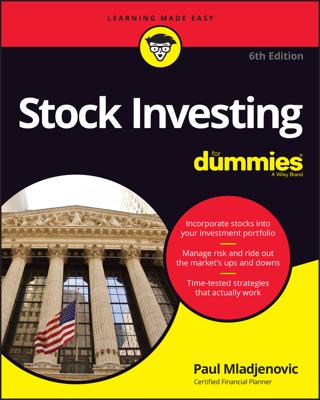There are a few key questions that can help you cull the so-so growth stocks to unearth the go-go ones for your investment portfolio. It’s time to dig deeper for the biggest potential winners. Keep in mind that you probably won’t find a stock to satisfy all the criteria presented here. Just make sure that your selection meets as many criteria as realistically possible.
Leaders in megatrends
A strong company in a growing industry is a common recipe for success. If you look at the history of stock investing, this point comes up constantly. Investors need to be on the alert for megatrends because they help ensure success.
A megatrend is a major development that has huge implications for much (if not all) of society for a long time to come. Good examples are the advent of the Internet and the aging of America. Both of these trends offer significant challenges and opportunities for our economy.
The Internet’s potential for economic application is still being developed. Millions are flocking to it for many reasons. And census data reveals that senior citizens (over 65) will be the fastest-growing segment of the U.S. population during the next 20 years. How does the stock investor take advantage of a megatrend?
Compare a company’s growth to an industry’s growth
You have to measure the growth of a company against something to figure out whether its stock is a growth stock. Usually, you compare the growth of a company with growth from other companies in the same industry or with the stock market in general.
In practical terms, when you measure the growth of a stock against the stock market, you’re actually comparing it against a generally accepted benchmark, such as the Dow Jones Industrial Average (DJIA) or the Standard & Poor’s 500 (S&P 500).
If a company’s earnings grow 15 percent per year over three years or more and the industry’s average growth rate over the same time frame is 10 percent, then the stock qualifies as a growth stock. You can easily calculate the earnings growth rate by comparing a company’s earnings in the current year to the preceding year and computing the difference as a percentage.
For example, if a company’s earnings (on a per-share basis) were $1 last year and $1.10 this year, then earnings grew by 10 percent. Many analysts also look at a current quarter and compare the earnings to the same quarter from the preceding year to see whether earnings are growing.
A growth stock is called that not only because the company is growing but also because the company is performing well with some consistency. Having a single year where your earnings do well versus the S&P 500’s average doesn’t cut it. Growth must be consistently accomplished.
Consider a company with a strong niche
Companies that have established a strong niche are consistently profitable. Look for a company with one or more of the following characteristics:
A strong brand: Companies such as Coca-Cola and Microsoft come to mind. Yes, other companies out there can make soda or software, but a business needs a lot more than a similar product to topple companies that have established an almost irrevocable identity with the public.
High barriers to entry: United Parcel Service and Federal Express have set up tremendous distribution and delivery networks that competitors can’t easily duplicate. High barriers to entry offer an important edge to companies that are already established. Examples of high barriers include high capital requirements (needing lots of cash to start) or special technology that’s not easily produced or acquired.
Research and development (R&D): Companies such as Pfizer and Merck spend a lot of money researching and developing new pharmaceutical products. This investment becomes a new product with millions of consumers who become loyal purchasers, so the company’s going to grow. You can find out what companies spend on R&D by checking their financial statements and their annual reports.
Make sure a company continues to do well
A company’s financial situation does change, and you, as a diligent investor, need to continue to look at the numbers for as long as the stock is in your portfolio. You may have chosen a great stock from a great company with great numbers in 2009, but chances are pretty good that the numbers have changed since then.
Great stocks don’t always stay that way. A great selection that you’re drawn to today may become tomorrow’s pariah. Information, both good and bad, moves like lightning. Keep an eye on your stock company’s numbers!
Investment lessons from history
Growth stocks have been part of the financial scene for nearly a century. Examples abound that offer rich information that you can apply to today’s stock market environment.
Look at past market winners, especially those during the bull market of the late 1990s and the bearish markets of 2000–2010, and ask yourself, “What made them profitable stocks?” These two time frames offer a stark contrast to each other, so can be helpful to consider together. The 1990s were booming times for stocks, whereas more recent years were very tough and bearish.
Being aware and acting logically are as vital to successful stock investing as they are to any other pursuit. Over and over again, history gives you the formula for successful stock investing:
Pick a company that has strong fundamentals, including signs such as rising sales and earnings and low debt.
Make sure that the company is in a growing industry.
Fully participate in stocks that are benefiting from bullish market developments in the general economy.
During a bear market or in bearish trends, switch more of your money out of growth stocks (such as technology) and into defensive stocks (such as utilities).
Monitor your stocks. Hold on to stocks that continue to have growth potential, and sell those stocks with declining prospects.

